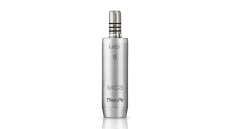Advertisement

With vibration-free operation from 60 to 40,000 rpm, the MC3 brush micromotor has a versatility that sets it apart. Also available in Micro-Series version with short nose and LED light with adjustable intensity.
Prized and recommended for its reliability and endurance, the MC3 has been proving its worth for many years. With a rotation speed ranging from 60 to 40,000 rpm, the performance it offers is remarkable.
HOW DO THE MC3 CARBON BRUSH MICROMOTOR WORK?
All electric micromotors are made up of a rotor and a stator. The rotation is generated by magnets interacting with an electric current flowing through a wire coil. In the case of brush micromotors, the coils are located on the rotor. Electrical power is supplied to the coils through carbon brushes located on the stator. The electrical current in the coil interacts with the magnets of the stator, thus generating rotation.
COMPLEXITY OF BRUSH MICROMOTORS.
Complex mechanical design (rotor: multiple windings, collector and brushes, stator: permanent magnet). The brushes wear out so they must be regularly replaced (approximately 18-24 months in a dental micromotor). The carbon dust from the brushes disperses in the micromotor and can reduce the life of the micromotor bearings. The carbon brushes can cause interference with other electronic devices because of their constant interaction with the electrical components in the micromotor. The carbon brushes cannot be washed or sterilized as they absorb moisture generated from an air compressor.
Prized and recommended for its reliability and endurance, the MC3 has been proving its worth for many years. With a rotation speed ranging from 60 to 40,000 rpm, the performance it offers is remarkable.
HOW DO THE MC3 CARBON BRUSH MICROMOTOR WORK?
All electric micromotors are made up of a rotor and a stator. The rotation is generated by magnets interacting with an electric current flowing through a wire coil. In the case of brush micromotors, the coils are located on the rotor. Electrical power is supplied to the coils through carbon brushes located on the stator. The electrical current in the coil interacts with the magnets of the stator, thus generating rotation.
COMPLEXITY OF BRUSH MICROMOTORS.
Complex mechanical design (rotor: multiple windings, collector and brushes, stator: permanent magnet). The brushes wear out so they must be regularly replaced (approximately 18-24 months in a dental micromotor). The carbon dust from the brushes disperses in the micromotor and can reduce the life of the micromotor bearings. The carbon brushes can cause interference with other electronic devices because of their constant interaction with the electrical components in the micromotor. The carbon brushes cannot be washed or sterilized as they absorb moisture generated from an air compressor.

Hans-Bunte-Str. 11
79108 Freiburg
Germany
79108 Freiburg
Germany
more information
Hall 10.1 | G012

